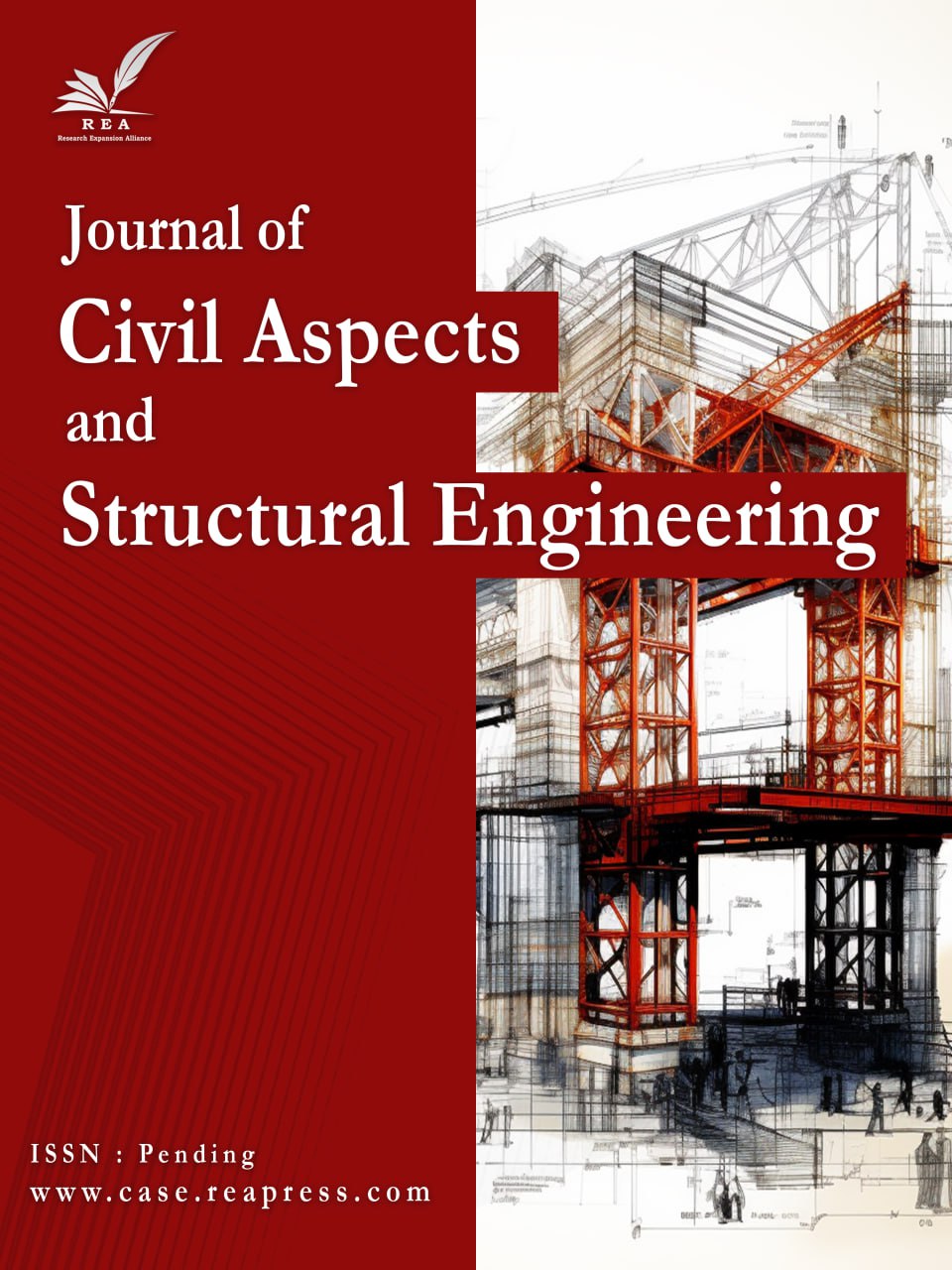Transverse Vibration Analysis of Saturated Pro-Elastic Beams as a Longitudinal Function Scale
Abstract
In this research, the free vibrations of beams made of saturated proelastic materials under different boundary conditions have been investigated. The equation governing the transverse movement of the beam is derived based on the Euler-Bernoulli theory of beams and using the relations governing the stress-strain of proelastic materials using Hamilton's principle. Different models of porosity distribution along the longitudinal length of the beam have been considered. The governing equation in different boundary conditions of double-ended, double-ended, and single-ended single-ended boundary conditions is determined by the differential quadratic method for three different types of uniform, linear, and quadratic porosity distribution along the length of the hollow beam. The natural frequencies of free vibration of the longitudinal porous beam have been obtained. The effect of porous material parameters on the change of natural frequencies in different boundary conditions has been concluded. The results obtained have been compared and validated with the results presented by other researchers.
Keywords:
Free vibration, Proelastic beam, Euler-bernoulli theory, Natural frequencyReferences
- [1] D’angelo, J., Case, E. D., Matchanov, N., Wu, C. I., Hogan, T. P., Barnard, J., … & Kanatzidis, M. G. (2011). Electrical, thermal, and mechanical characterization of novel segmented-leg thermoelectric modules. Journal of electronic materials, 40(10), 2051–2062. https://doi.org/10.1007/s11664-011-1717-7
- [2] Givi, A. N., Rashid, S. A., Aziz, F. N. A., & Salleh, M. A. M. (2010). Assessment of the effects of rice husk ash particle size on strength, water permeability and workability of binary blended concrete. Construction and building materials, 24(11), 2145–2150. https://doi.org/10.1016/j.conbuildmat.2010.04.045
- [3] Zhao, J., Jiang, Y., & Li, X. (2023). Flexural behavior of concrete beams reinforced with high-strength steel bars after exposure to elevated temperatures. Construction and building materials, 382, 131317. https://doi.org/10.1016/j.conbuildmat.2023.131317
- [4] Singh, A., Kumar, R., Mehta, P. K., & Tripathi, D. (2020). Effect of nitric acid on rice husk ash steel fiber reinforced concrete. Materials today: proceedings, 27, 995–1000. https://doi.org/10.1016/j.matpr.2020.01.310
- [5] Srinivasamurthy, L., Nataraja, M. C., & Srinivasan, K. (2024). Investigation on flexural behavior of conventionally reinforced, steel fiber-reinforced, and post-tensioned geopolymer concrete beams. Journal of the institution of engineers (India): series a, 105(1), 129–150. https://doi.org/10.1007/s40030-023-00772-3
- [6] Sharma, R. K. (2014). Effect of substitution of cement with rice husk ash on compressive strength of concrete using plastic fibres and super plasticizer. KSCE journal of civil engineering, 18, 2138–2142. http://dx.doi.org/10.1007/s12205-014-0634-8
- [7] Heidary, F., & Reza Eslami, M. (2006). Piezo-control of forced vibrations of a thermoelastic composite plate. Composite structures, 74(1), 99–105. https://doi.org/10.1016/j.compstruct.2005.03.011
- [8] Zareei, S. A., Ameri, F., Dorostkar, F., & Ahmadi, M. (2017). Rice husk ash as a partial replacement of cement in high strength concrete containing micro silica: evaluating durability and mechanical properties. Case studies in construction materials, 7, 73–81. https://doi.org/10.1016/j.cscm.2017.05.001
- [9] Li, S., Su, H., & Cheng, C. (2009). Free vibration of functionally graded material beams with surface-bonded piezoelectric layers in thermal environment. Applied mathematics and mechanics, 30(8), 969–982. https://doi.org/10.1007/s10483-009-0803-7
- [10] Quan, J. R., & Chang, C. T. (1989). New insights in solving distributed system equations by the quadrature method—I. Analysis. Computers & chemical engineering, 13(7), 779–788. https://doi.org/10.1016/0098-1354(89)85051-3
- [11] Shu, C., & Du, H. (1997). Implementation of clamped and simply supported boundary conditions in the GDQ free vibration analysis of beams and plates. International journal of solids and structures, 34(7), 819–835. https://doi.org/10.1016/S0020-7683(96)00057-1
- [12] Biot, M. A. (1941). A mechanical analyzer for the prediction of earthquake stresses. Bulletin of the seismological society of america, 31(2), 151–171. https://doi.org/10.1785/BSSA0310020151
- [13] Krzysztof Magnucki, P. S. (2004). Elastic buckling of a porous beam. Journal of theoretical and applied mechanics, 42(4), 859–868. https://b2n.ir/g99346
- [14] Wang, X.; Bert, C. W. (1993). A new approach in applying differential quadrature to static and free vibrational analyses of beams and plates. Journal of sound and vibration, 162(3), 566–572. https://doi.org/10.1006/jsvi.1993.1143


